Background: The advent of drugs targeting the PD-1/PD-L1 axis has revolutionized NSCLC treatment. Although promising, individual responses to these therapies can vary among individuals, and research is ongoing to better understand the mechanisms involved in PD1/PD-L1 expression to optimize treatment protocols, and identify which patients are most likely to benefit from these therapies. In this study, Genetic Fingerprint (GFPrint), aMLF, was employed to identify mutations in genes linked to PD-L1 expression in NSCLC tumor samples.
Methods: Whole exome sequencing (WES) was run on samples from biopsies of 46 NSCLC patients (histologic subtypes: squamous-cell carcinoma and adenocarcinoma). WES data were encoded using GFPrint, a MLF that generates virtual representations of the tumor exomes in a latent space (LS) defined by the genetic features of the samples. Clusters of patients were identified in such LS based on the genetic similarities of their tumors. Statistical univariate analysis was run to analyze differences in the distribution among both clusters of clinical (age, smoking, and metastatic status) and pathological (histotype and PD-L1 expression) features. The mutational burden (MB) of each cluster was also examined by pathway enrichment analysis (PEA).
Results: Two main clusters were identified, C0 (n=16) and C1 (n=17), with 13 unassigned patients. Main differences between clusters were related to histology and PD-L1 expression. C0 included
significantly less patients with adenocarcinoma (10/16; 62.5%) compared to CL1 (17/17; 100%) (p-value=.01). In addition, C0 presented more patients expressing PD-L1 (9/16; 56.2%) compared to C1 (3/17; 17.6%) (p-value=.04). Of interest, PD-L1 positivity was significantly higher (p value=.03) in adenocarcinomas of C0 patients (6/10; 60.0%) than those of C1 (3/17; 17.6%). Moreover, C0 adenocarcinomas presented higher levels of PD-L1 expression (6.3+/-9.7 %) than those of C1 (2.3+/-7.5 %) (p value=.06). MB analysis revealed that 1,357 genes were mutated exclusively in C0 patients, and PEA allowed the identification of 3 enriched cancer-related KEGG pathways: HIF-1 signaling, Ca2+ signaling and actin cytoskeleton. Selection of non-silent mutations in these pathways enabled the identification of 10 genes, mostly included in the HIF-1 signaling pathway, with previous data suggesting their involvement in PD-L1 regulation and expression: PIK3R1, HK1, NOS2, NRAS, BRAF, ITGA1, ITGA9, EGLN1, EGLN2 and AKT1, being the first 6 the only ones found in adenocarcinomas.
Conclusions: The identified genes deserve further studies to validate them as possible targets of pharmacological intervention concomitant to PD-1/PD-L1 blockade, and also as potential biomarkers for patients’ selection to improve the efficiency of immunotherapy in NSCLC treatment.
Affiliations: Topazium (GSM, JMDC, CMG); Biomakers (AMB, FC, DD, RS)
Citation: J Clin Oncol 42, 2024 (suppl 16; abstr e13600)
Find the abstract at: 10.1200/JCO.2024.42.16_suppl.e13600





